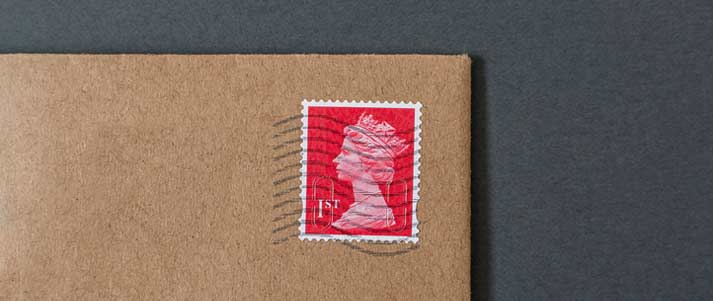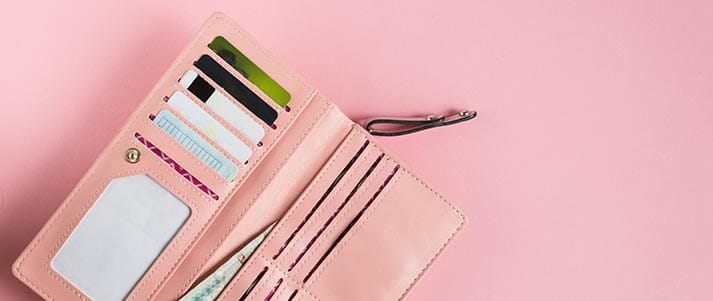How chargeback and Section 75 protection work
Unsure how safe your money is when using a credit or debit card? Knowing the facts about Section 75 and chargeback will pay off if something ever goes wrong with a purchase.

Credit: Nutlegal Photographer, Mix and Match Studio – Shutterstock
Your money matters. When buying something like a laptop or a holiday, it's essential to know your cash is protected if the purchase goes wrong.
Make sure you're fully aware of how Section 75 and chargeback work, and how to claim via either scheme if you ever need to dispute a purchase.
With this info, whether you're using your student bank account or a credit card, you'll know what measures are in place to prevent you from losing money if a purchase goes wrong.
What's in this guide?
Credit card protection
When used carefully, credit cards can help to protect your money when you make big purchases. This is because of Section 75 of the Consumer Credit Act 1974.
You'll usually hear it referred to as just 'Section 75', which is how we'll refer to it in this guide.
This protection does not cover you for payments you're unable to afford. If you're not confident you can keep up with payments, don't use a credit card. Falling behind with payments can impact your credit score and lead you to slip into debt.
Instead, Section 75 is legal protection that lets you claim money back if anything goes wrong with a purchase on the seller's side.
What is Section 75?

Credit: Josep Suria – Shutterstock
Section 75 protection applies to purchases that cost over £100 and up to £30,000.
You can even get this protection if you've only used your credit card to pay for the deposit of a purchase, as long as the full cost is within the price limit.
So, you may have only spent £50 so far on the deposit. But, if the full price of the purchase is £110, you're covered by Section 75 protection.
For Section 75 to apply, the individual items that you've bought need to cost over £100 and up to £30,000. If you buy multiple things that cost over £100 combined, but under £100 individually, these won't qualify for the protection.
As an example, if you use your credit card to buy a £500 games console and something goes wrong with the purchase, you can make a Section 75 claim.
However, if you spend £150 on three sets of flight tickets that cost £50 each, you can't make a Section 75 claim.
Here are a couple more examples of when you can't make Section 75 claims:
- If you've made a credit card purchase via PayPal, Section 75 doesn't apply.
- When purchases are made with interest-free buy now, pay later (BNPL) services like Klarna, these aren't currently covered by Section 75 protection. The Financial Conduct Authority (FCA) doesn't yet regulate interest-free BNPL purchases, but there are plans for this to happen. When the regulation begins, it's hoped that BNPL purchases will get Section 75 protection.
Purchases made via third-party sellers
If you use a credit card to make a purchase via a third party, it gets more complicated.
A common example is when buying tickets from an agency or third-party site. If there's a problem with the event/service you've bought a ticket for, it's not necessarily linked to the third-party seller. They've just sold you the ticket, but aren't responsible for providing the service.
This can make it difficult to claim Section 75 protection.
You should have more protection if you buy tickets directly from the company that's hosting the event/providing the service.
How to make a Section 75 claim

Credit: Stephen Plaster – Shutterstock
If something goes wrong with a credit card purchase, contact the seller first. They might be able to resolve the issue for you without you needing to take the complaint further.
But, if this doesn't work, your next step can be to make a Section 75 claim.
To do this, you'll need to write to your credit card company.
Here are some things to include in the letter:
- Your credit card/account number
- An explicit reference to Section 75 of the Consumer Credit Act 1974
- What you purchased
- Where you bought it from
- When the purchase was made
- The amount you spent on it
- What was wrong with the purchase
- What you're asking for (e.g. the money back in full)
- Whether you've contacted the seller, and if so how they responded
- Evidence of your purchase, such as a receipt.
Before sending the letter, check that you've saved a copy of it on your computer for your own records.
You could even send the letter with signed-for delivery as long as you don't mind spending a bit more. If you do, keep the receipt from the Post Office as evidence. This will help your case if you decide to take the complaint any further.
How long does a Section 75 claim take?
You should hear back from the credit card company within eight weeks. If you don't, you have the option to take the complaint to the Financial Ombudsman Service. They should be able to help you resolve the issue.
Head to the Financial Ombudsman Service's website for guidance on how to take complaints to them.
Debit card protection

Credit: Inna Dodor – Shutterstock
When Section 75 doesn't apply, look into making a chargeback claim. This could be for debit card purchases, or credit card purchases that cost under £100.
Chargeback is similar to Section 75. But a key difference between the two is that, while Section 75 is legal protection, chargeback isn't. Instead, chargeback is something that Visa, Mastercard and American Express have agreed to offer.
As it's not legal protection, this can potentially make it harder to get your money back from a chargeback claim compared to a Section 75 claim.
What is chargeback?
Chargeback essentially allows the card provider to reverse a purchase and return your money if something goes wrong.
However, there can be variations in the rules for chargeback depending on your bank card provider. Contact your bank if you're unsure whether a purchase is eligible for a chargeback claim.
An example of when you might be able to make a chargeback claim is if you spend £50 on a pair of shoes that never arrive, but the seller refuses to give you a refund. At this point, you could contact the bank to ask for the money to be returned to your account.
It could be more difficult to make a chargeback claim if you paid via PayPal.
But, it will help your case if your PayPal account was empty at the time of the transaction. This will have resulted in the full payment being taken from your debit card, rather than using money that you'd previously added to the PayPal account. As such, it'll be easier to prove how much you spent from that debit card for the purchase.
This is useful to keep in mind for any chargeback claim. You're not guaranteed the money back. But, the easier it is for you to prove that you used your card for a purchase that went wrong, the better your chances are of getting your money back.
How to make a chargeback claim

Credit: fizkes, Ilya Sergeevych – Shutterstock
When there's an issue with a purchase, contact the seller to see if you can resolve it with them directly. They might offer you a refund or a replacement for the item you bought. If you're satisfied with their response, there's no need to take the complaint further.
However, if you're not happy with the seller's response, there's the option to contact your bank to request a chargeback.
The specific rules for chargeback vary depending on the card provider. Look on your bank's website or contact them directly to find out how to make a claim.
As a general rule, you'll need to make a chargeback claim within 120 days of making the purchase.
Your bank should outline how to make your chargeback claim, possibly by directing you to an online form to fill out. They will also highlight what evidence you'll need to submit along with your claim.
The ideal scenario is that the process is straightforward and you get the money back. Please note, though, that the retailer could potentially dispute the claim.
There's also a risk that you'll need to wait a long time for a response from your card provider.
How long does a chargeback claim take?
There's not a set amount of time that card providers have to respond to chargeback claims.
Eight weeks is a good guideline, though. If you don't hear back within that time, you could then consider taking the complaint further to the Financial Ombudsman Service.
However, while the ombudsman could potentially help you to resolve the case, think about whether this is an appropriate complaint to take to them. If the claim applies to a £10 purchase, this might not be a large enough spend to justify taking the complaint to this level.
It's best to use your judgement on whether it is a complaint that you should take further. If you're unsure, you could contact Citizen Advice for guidance.
Keen to find out more about when you're entitled to get your money back? Read our guide to your consumer rights.








